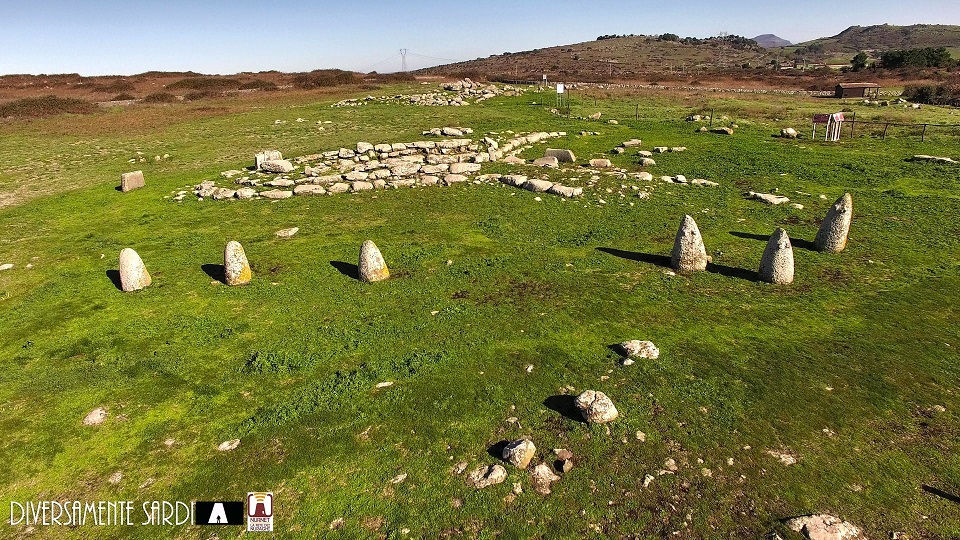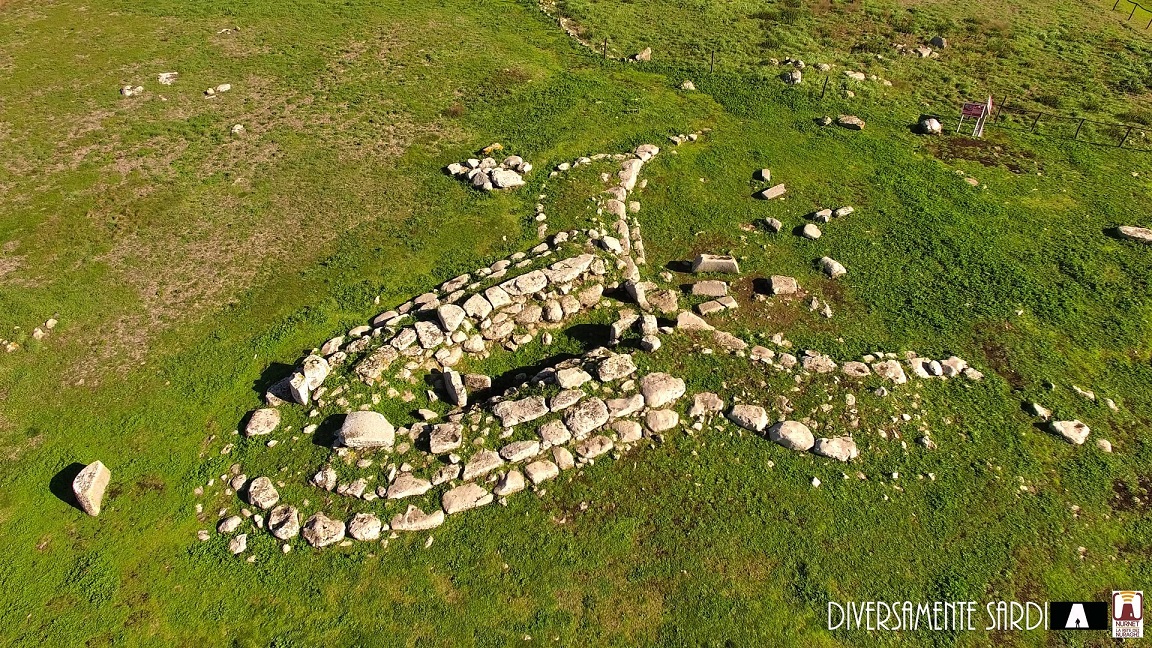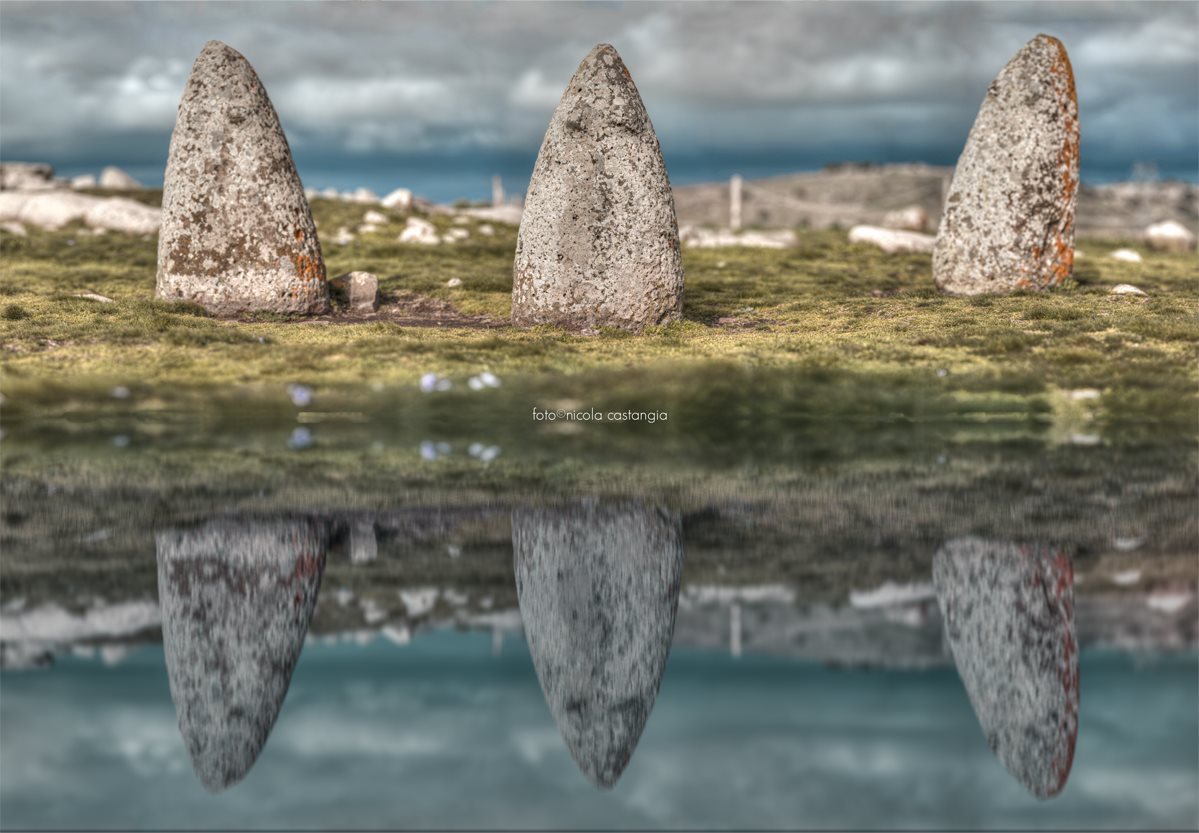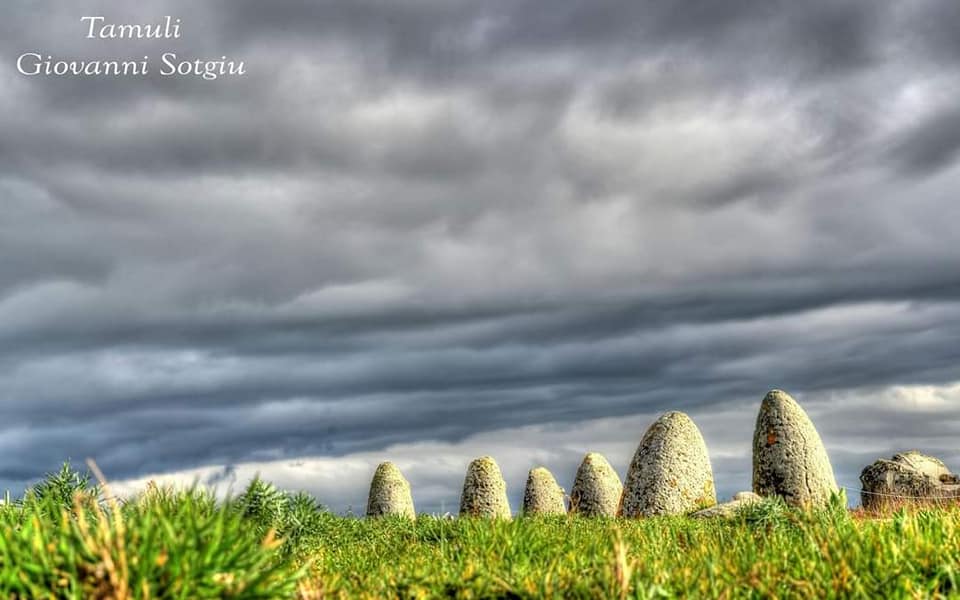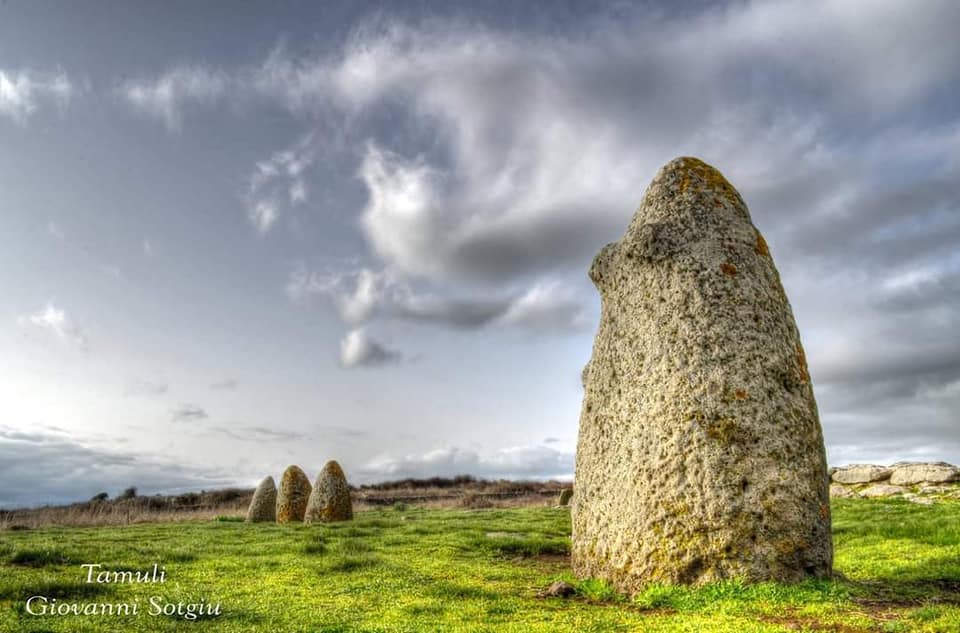The nuragic complex of Tamuli (Macomer), in the images of Gianni Sirigu, Nicola Castangia, Sergio Melis, Giovanni Sotgiu, and Diversamente Sardi. Regarding the betili, in the volume “L’Alba dei Nuraghi” (ed. 2005), the archaeologist Giovanni Ugas wrote among other things: “The current orientation of the betili of Tamuli, all arranged beside a single tomb, is aligned North-West/South-East, but it is possible that the original placement was different. It can be hypothesized that the three stones with breasts were aligned from East to South to represent life and those smooth from West to North to recall the journey of souls in the afterlife towards rebirth. Considering the presence of multiple tombs at the same site, it leads one to think that originally a group of three betili was placed beside one tomb and the other group was arranged next to another.” Also in this regard, Ugas noted in a footnote, concerning the supposed betilic alignments, that “in this case, however, as in the concept of the Egyptian afterlife, we are dealing with an ideological model linked to the daily journey of the sun and not to the monthly cycle of the moon. To resolve this important calendrical and ideological question, we would need some further support from archaeology.”


